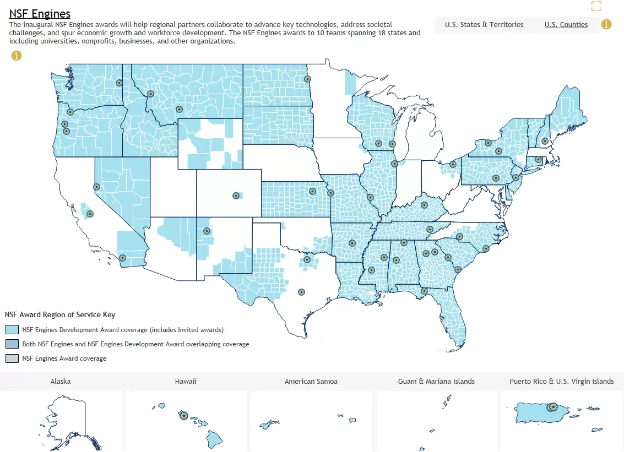The NSF and the Next Generation of STEMM Workers
The research and development ecosystem in the United States is in the middle of a major transition. To remain a leader in the science and technology (S&T) space, the CHIPS and Science Act, enacted in 2022, is intended to harness public-private partnerships to revitalize America’s innovation capacity and maintain the nation’s status as a leader in S&T. The Act empowered the National Science Foundation (NSF) to play a pivotal role in developing future technologies as well as in training the skilled workforce necessary to sustain our global leadership.
With the enactment of the CHIPs and Science Act, the NSF has expanded its attention on workforce education programs that go beyond traditional doctoral-level training. This change has been enhanced by the recently- established Technology, Innovation, and Partnerships (TIP) Directorate, which develops public-private partnerships to boost innovation and economic growth around emerging technologies. In particular, the NSF has expanded its support of what experts call the Skilled Technical Workforce (STW).
The STW includes STEMM workers who fill jobs requiring more than a high school diploma but less than a bachelor’s degree. They are the technicians, specialists, and fabricators that lay the groundwork for high-level research. Half of America’s 37 million STEMM workers fall into this category, and they are critical to the function of STEMM-related industries. Community colleges play a major role in training this workforce through certificates, apprenticeships, and associate’s degree programs. These career paths represent well-paying, middle-class jobs that will help generate economic growth and prosperity.
To learn more about the changes to workforce development at the NSF and the TIP Directorate, as well as its innovative NSF Engines project, we spoke with Shalin Jyotishi of New America, a think tank with a focus on workforce issues.
Shalin has written extensively on the CHIPS Act and the NSF’s approach to workforce development. For him, the CHIPS and Science Act was a total game changer because it enables the NSF to support economic and workforce development at all levels and across the country. Shalin called out the importance of the TIP Directorate’s NSF Regional Innovation Engines program for realizing the promise of NSF’s expanded mission by enhancing and democratizing access to workforce pathways around emerging technology sectors.
The scale at which the Engines program has been implemented is impressive. The first NSF Engine was established at Forsyth Tech Community College in North Carolina in recognition of 2-year colleges’ role in domestic economic renewal. It has grown to nine NSF engines, each one committed to accelerating scientific and technological advancement in their respective area, with partnerships between government, academic institutions (primarily community colleges), economic developers, and private businesses. The map below illustrates the broad regional distribution of the engines and the scope of the program.
However, much of the progress made in the past three years could be at risk in the face of potential budget cuts. The President’s FY26 budget proposes to cut the NSF budget by 56%. Though the Senate Appropriations Committee has rejected that proposal by keeping FY26 NSF funding at the FY25 level, the House Appropriations Committee is seeking a 23% cut. Shalin notes: “I don’t think it would be hyperbolic to say that it would be rather catastrophic if the NSF budget were to be cut given all the momentum of the TIP Directorate and the advances in skilled technical workforce education at community colleges. The community college share of the NSF budget is not all that large, but it’s critical. While other agencies fund workforce training in the United States, the NSF is unique in that it is focused on capacity building of community colleges, the sharing of best practices, and the engagement of industry and co-investment—from artificial intelligence to biotechnology.”
The CHIPS Act has helped NSF ensure that research leads to economic growth across the country. Through NSF programs like Engines, the nation can remain the global leader in S&T with ongoing federal support.





